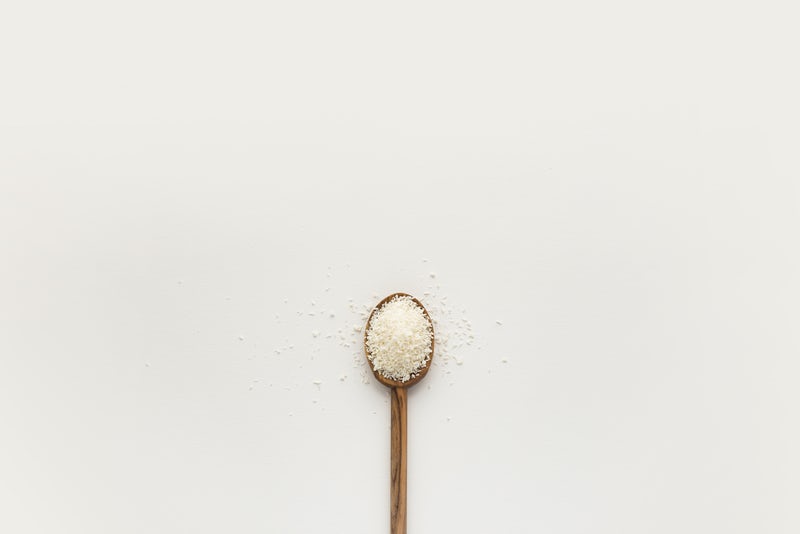Yes, I’ve taken another detour this month with my blog. I promise I’ll get back to talking about my ‘Wellness Tips’ in more detail but I thought you just have to know about the hidden sources of MSG. There is a lot of evidence out there showing the harmful effects of MSG aka Monosodium Glutamate and the more people that know about this common food additive the better! Apart from its addictive qualities, it’s a neurotoxin aka brain cell toxin.
Hidden Sources of Processed Free Glutamic Acid (MSG)
The MSG reaction is a reaction to free glutamic acid that occurs in food as a consequence of manufacture. MSG-sensitive people do not react to protein (which contains bound glutamic acid) or any of the minute amounts of free glutamic acid that might be found in unadulterated, unfermented food.
These ALWAYS contain MSG:
| Glutamate | Glutamic acid | Gelatin |
| Monosodium glutamate | Calcium caseinate | Textured protein |
| Monopotassium glutamate | Sodium caseinate | Yeast nutrient |
| Yeast extract | Yeast food | Autolyzed yeast |
| Hydrolyzed protein (any protein that is hydrolyzed) |
Hydrolyzed corn gluten | Natrium glutamate (natrium is Latin/German for sodium) |
These OFTEN contain MSG or create MSG during processing:
| Carrageenan | Maltodextrin | Malt extract |
| Natural pork flavoring | Citric acid | Malt flavoring |
| Bouillon and broth | Natural chicken flavoring | Soy protein isolate |
| Natural beef flavoring | Ultra-pasteurized | Soy sauce |
| Stock | Barley malt | Soy sauce extract |
| Whey protein concentrate | Pectin | Soy protein |
| Whey protein | Protease | Soy protein concentrate |
| Whey protein isolate | Protease enzymes | Anything protein fortified |
| Flavors(s) and flavoring(s) | Anything enzyme modified | Anything fermented |
| Natural flavor(s) and flavoring(s) | Enzymes anything | Seasonings (the word “seasonings”) |
In Addition …
The new game is to label hydrolyzed proteins as pea protein, whey protein, corn protein, etc. If a pea, for example, were whole, it would be identified as a pea. Calling an ingredient pea protein indicates that the pea has been hydrolyzed, at least in part, and that processed MSG is present. Relatively new to the list are wheat protein and soy protein.
Disodium guanylate and disodium inosinate are expensive food additives that work synergistically with inexpensive MSG. Their use suggests that the product has MSG in it. They would probably not be used as food additives if there were no MSG present.
MSG reactions have been reported to soaps, shampoos, hair conditioners, and cosmetics, in which MSG is hidden in ingredients that include the words “hydrolyzed,” “amino acids,” and “protein.”
Low-fat and no-fat milk products often include milk solids that contain MSG.
Drinks, candy, and chewing gum are potential sources of hidden MSG and of aspartame and neotame. Aspartic acid, found in neotame and aspartame (NutraSweet), ordinarily causes MSG-type reactions in MSG-sensitive people. Aspartame is found in some medications, including children’s medications. Neotame is relatively new, and we have not yet seen it used widely. Check with your pharmacist.
Binders and fillers for medications, nutrients, and supplements, both prescription and nonprescription, enteral feeding materials, and some fluids administered intravenously in hospitals may contain MSG.
According to the manufacturer Merck, Varivax® chicken pox vaccine (Varicella Virus Vaccine Live) contains L-monosodium glutamate and hydrolyzed gelatin, both of which contain MSG, which causes brain lesions in young laboratory animals and endocrine disturbances such as obesity and reproductive disorders later in life. It would appear that most, if not all, live virus vaccines contain MSG.
Reactions to MSG are dose related, i.e., some people react to even very small amounts. MSG-induced reactions may occur immediately after ingestion or after as much as 48 hours.
Remember: By FDA definition, all MSG is “naturally occurring.” “Natural” doesn’t mean “safe”; it only means that the ingredient started out in nature.
Please comment below on your experiences with MSG, especially how you curbed your ‘addiction’ to it!

